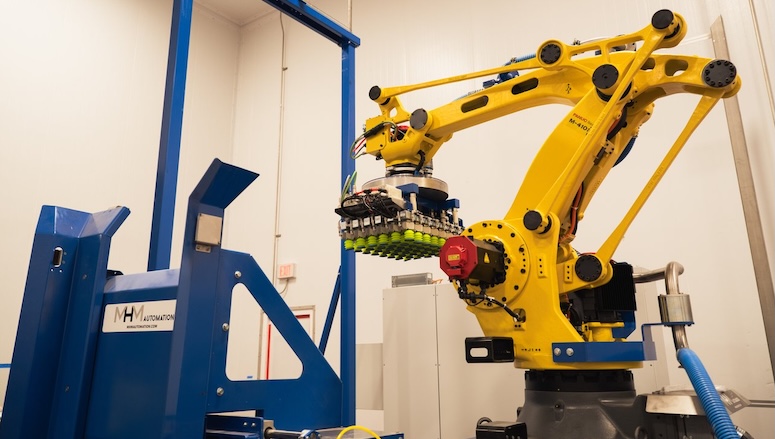— 10 min read
Trade Coordination: The Contractor’s Guide

Last Updated Oct 1, 2025

Tamara Aspeling
Writer & Construction Estimator
11 articles
Tamara Aspeling is a trained construction estimator and project manager with 25 years of industry experience. She started writing professionally in 2008 and has since written extensively for the construction industry, including publications like Modular Advantage magazine. She is also a traditionally published nonfiction author and the owner of The Construction Writer Inc. Tamara studied at Western Province Technical College in South Africa and completed her national certificate in 1999. She also holds an SEO Certification from Google and a Content Marketing Certification from HubSpot.
Last Updated Oct 1, 2025

Trade coordination in construction is a long-standing challenge. For as long as specialized trades have been hired for projects, there has been a need to manage a timely onsite presence, efficient work execution and project completion.
Without proper trade coordination, projects can face delays, budget overruns and a decline in overall quality. This article explores the components of trade coordination and ways to make the process more efficient, including emerging technological strategies.
Table of contents
What is trade coordination?
Trade coordination is the process of planning, scheduling and managing the trades and subtrades involved in a construction project for the full project lifecycle.
Each of those trades operates independently from the main contractor, which means they have their own supply chain and labor challenges, crises on other jobsites and more. That makes the job of the trade coordinator exponentially more difficult because they’re working with hundreds of different scenarios, needs and wants.
Since the work performed by trades and subtrades is all part of the same project schedule, sometimes on the critical path and certainly interdependent on all work that comes before and after, trade and subtrade coordination is key for project success.
Managing trades effectively requires project teams to stay on top of numerous issues, such as:
- Preventing delays
- Managing delays when they happen, by accelerating work or hiring a different trade contractor
- Avoiding rework when work is subpar or not to spec
- Assuring integration between trades
- Managing logistics and freight so that materials and equipment deliveries arive when they are needed
When one trade is delayed, for whatever reason, it can delay and derail the whole project timeline. So it’s necessaryl to manage not only the trades that are already onsite, but the ones that will be soon. If everything and everyone does not stick to the project schedule, there will be delays and cost overruns.
Trade coordination versus collaboration
Sometimes, it can be hard to tell where coordination and collaboration begin and end when planning and executing complex construction projects.
However, they are different things. Coordination is a technical, usually contractually required, process that integrates different parts of the work to avoid clashes. It is often also included in subcontracts, requiring trades and subtrades to coordinate with other trades on site to make sure the work can proceed.
This means that while the project team is responsible for planning when those trades will be on site to carry out different parts of the work, when the trades are onsite, they are legally required to cooperate with other trades to compromise where necessary to get the work done.
When two trades are scheduled to work in one area at the same time, both should confirm that the other team has enough room for access, equipment use and so on.
Collaboration is less defined in the construction world, but it is woven into everything that happens on a construction site.
- Professional teams collaborate when creating the design to make sure that the architecture, design, engineering and functionality of a building all work together seamlessly.
- Project teams collaborate with each other to add information to a model or develop a schedule that makes the most sense for everyone involved in getting the project from start to finish.
- Field crews collaborate with project teams and professionals by attending project meetings and sharing potential issues and required changes.
Both coordination and collaboration are necessary to succeed.
For complex projects with a large workforce comprising many different trades and disciplines, to successfully get from concept to completion, both coordination and collaboration are required.
Project managers and planners can draft plans and schedules, but things change daily on construction sites, and it’s collaboration that allows them to update and revise those plans as things change and evolve.
Trade coordination never happens in a vacuum, and it’s important that the team gets and incorporates updates and feedback from the field and other divisions and departments.
Common challenges in trade coordination (and how to solve them)
Coordinating different groups of people with different goals and ideas will always be tricky, and trade coordination on construction jobsites is no different.
While every situation and site is different, there are a few common challenges most teams will face, but fortunately, there are also proven solutions.
Poor communication and collaboration
It's unfortunately common for work on construction sites to happen in silos. When different groups work very independently of each other, with little to no contact or communication, none of them know what the others are doing, and that’s a quick way to run into problems.
Establishing clear communication channels, using construction software that provides both a single source of truth and the ability to communicate and collaborate and scheduling regular meetings are all good ways to make sure everyone is on the same page.
Inadequate planning and trade stacking
To get construction projects completed on time, there usually have to be dozens or even hundreds of different crews and trades working concurrently on any jobsite at any given time.
With so many different things happening at the same time, it’s very easy to run into clashes, congestion and even serious safety hazards.
Trade stacking is a common, yet avoidable, challenge in construction. Project managers can prevent overcrowding and workflow disruptions by implementing effective project planning, utilizing modern scheduling tools and promoting clear and constant communication among stakeholders.

Caitlin Sweeney
Contributing Writer
Procore Technologies
It’s nearly impossible to coordinate that many different tasks and work groups manually, so using a digital tool like the Last Planner System® helps project planners to avoid issues before they happen.
Design and constructibility issues
One of the biggest issues facing design and construction teams when working with old-fashioned 2D design methods is design clashes and constructability issues.
In the past, it was not uncommon to discover on-site that the equipment on two different drawing sets was required to occupy the same or overlapping space. Which, of course, simply can’t happen.
Sometimes, those clashes were not discovered until trades were on site, looking at the different drawing sets side by side, and that invariably leads to delays and extra costs while work pauses and the design is reworked.
Tools like building information modeling (BIM) are designed to prevent that exact situation, and integrating them into planning and trade coordination can eliminate the vast majority of these kinds of situations.
Stay updated on what’s happening in construction.
Subscribe to Blueprint, Procore’s free construction newsletter, to get content from industry experts delivered straight to your inbox.

The role of BIM in trade coordination
One of the biggest challenges modern project management teams face is that modern buildings and projects are so much bigger and more complex than they once were, and everyone is on an accelerated timeline.
At the same time, modern buildings have become even more complex and consist of layers upon layers of services, utilities and finishes that all have to happen in perfect sequence to make sure that a project stays on track.
In the past, project teams would have to do all of this manually, referring to countless drawings and drawing sets, relying on Gantt charts and still encountering conflicts along the way.
As BIM becomes more common in construction, there’s a new, more efficient way to do this.
- Buildings are modelled in BIM, building a central, multi-disciplinary federated model that includes all trades, services and specialties — and serves as a single source of truth for all stakeholders
- Because BIM is three-dimensional, teams can view every element of the building from the same model, rather than flipping through hundreds of drawings and details
- BIM also includes clash detection, which tells the team when there is a problem with the design or scheduling of elements of the work
- By developing and using 3D models in BIM, project teams can detect clashes before they happen, and alter the method or sequencing of the work to avoid them
- When the team uses BIM collaboratively, the same applies to any changes or additions to the work
In a nutshell, BIM allows project teams to see in real time, in a digital environment, if there is a clash between systems like plumbing, electrical or HVAC, alerts them to the problem and allows them to make changes to eliminate the clash.
Many design teams don't perform internal clash detection before releasing their general building models. This means that when specialty trades and general contractors get these models, they use them as a baseline and start finding errors.
As the model trickles down to specialists who 'live and breathe' their specific parts of the building, there's less room to hide errors. For example, a design team likely doesn't have an HVAC specialist reviewing every detail to make sure the ductwork is in the exact right place and size.

Nicholas Tilford
Senior Trainer, Industry Advancement
Procore Technologies
When problems are found early and resolved before they happen, it’s much easier to make sure the right trades and subtrades are on site at the right time, and that’s better for everyone.
Successful trade coordination across the project lifecycle
Many large-scale construction projects can take years from concept to completion, and managing and coordinating trades over an extended time span like that presents some unique challenges.
Applying some key principles at every step of the project can improve trade coordination at every step.
1. Preconstruction phase
Good trade coordination actually starts long before there are shovels in the ground.
Involving key trades and specialists in the design phase allows them to provide practical, real-world design advice and input.
Creating a detailed schedule and BIM model at this stage of the project can also help make sure clashes are detected and corrected early, and allows for collaborative virtual planning.
2. Construction phase
Once work gets started, changes, conflicts and delays are inevitable, but there are steps that can be taken to coordinate trades better and resolve problems faster.
Allowing mobile access to BIM models in the field is one way to improve communication and collaboration, and gives field leaders detailed information in real time and three dimensions.
Regular on-site meetings with all key stakeholders, including trade foremen, is another important factor in trade coordination success, and if possible, creating staggered shifts to prevent physical congestion in work areas can help take some of the pressure off trades completing work concurrently.
3. Closeout phase
Getting paperwork out of some trades is notoriously difficult, and it can delay the closeout process.
Project leaders should clearly define the closeout documentation, warranties and manuals required during project closeout as early as possible in the process and make sure all trades are aware of project requirements.
Maintaining a BIM model throughout the course of the project — and making sure all elements are up to date — also allows project teams to hand it over to the client as a digital twin.
Finally, collaborate and work with trades and subtrades to create and complete the project punch list.
The future of tech and trade coordination
For a long time, construction was one of the industries that lagged behind in the tech race. However, things are changing. Companies are actively seeking out technologies that can improve planning, productivity and more, and developers and tech startups are racing to create the next big thing.
That’s great news for companies looking to improve things like trade coordination using digital tools, and there are several major types of tools that might be useful.
- Artificial intelligence (AI): Excels at analyzing large amounts of data and can be trained to optimize schedules, predict risks and more
- Robotics and automation: Help to address construction labor shortages by automating repetitive tasks, leaving skilled tradespeople free to tackle more complex tasks
- Internet of Things (IoT): Uses built-in sensors and tracking information to monitor equipment or materials on site
- Prefabricated and modular: Offsite construction cuts onsite installation and construction time down exponentially, which makes trade coordination easier
- Digital twins: Build a real-time, three-dimensional version of the project, allowing for continuous comparisons from the design to the actual work on site
Bringing it all together: A coordinated approach
Coordinating trades is a significant part of any construction project, and successful projects often depend on how well teams manage this complex task.
The industry is changing, with new technologies and approaches making it easier to overcome long-standing challenges like communication breakdowns and inadequate planning.
By focusing on clear communication, using tools like BIM to prevent clashes and creating a collaborative environment at every stage of the project, teams can make sure that work flows smoothly from the preconstruction phase through closeout. Embracing new technologies and continuously improving coordination processes will enable construction professionals to deliver projects on time and within budget.
Was this article helpful?
Thank you for your submission.
0%
0%
You voted that this article was . Was this a mistake? If so, change your vote
Scroll less, learn more about construction.
Subscribe to The Blueprint, Procore’s construction newsletter, to get content from industry experts delivered straight to your inbox.
By clicking this button, you agree to our Privacy Notice and Terms of Service.
Thank you!
You’re signed up to receive The Blueprint newsletter from Procore. You can unsubscribe at any time.
Categories:
Written by

Tamara Aspeling
Writer & Construction Estimator
11 articles
Tamara Aspeling is a trained construction estimator and project manager with 25 years of industry experience. She started writing professionally in 2008 and has since written extensively for the construction industry, including publications like Modular Advantage magazine. She is also a traditionally published nonfiction author and the owner of The Construction Writer Inc. Tamara studied at Western Province Technical College in South Africa and completed her national certificate in 1999. She also holds an SEO Certification from Google and a Content Marketing Certification from HubSpot.
View profileExplore more helpful resources

Harnessing Smart Construction Technology for Future Growth
Augmenting human intelligence with smart technology in construction makes it possible to tackle the considerable challenges of building the structures society demands. To adapt to client expectations while maintaining profitability,...

Mastering Capital Project Risk Management Across the Project Lifecycle
Capital projects — construction of significant infrastructure such as highways, utilities, or large-scale structures like hospitals or office buildings — have long timelines and with longer construction time comes greater...

Automation in Construction: Transforming the Future of Building
Technological advancements empower the construction industry to tackle complex projects and drive the global demand for sustainable, feature-rich structures technology makes possible. From design to closeout, construction automation is enabling...

Bid Management Software: Key Features & How to Choose the Right Fit
Bidding on construction projects can be a complex process. Sourcing appropriate bids and requests for proposals, analyzing bid documents, making sure estimates, preliminary schedules, and other mandatory requirements are met...
Free Tools
Calculators
Use our calculators to estimate the cost of construction materials for your next project.
Templates
Find a template to help you with your construction project tasks.
Material Price Tracker
Get the latest U.S. retail prices and view historical trends for common building materials.
Glossary
Explore key terms and phrases used in the industry.
